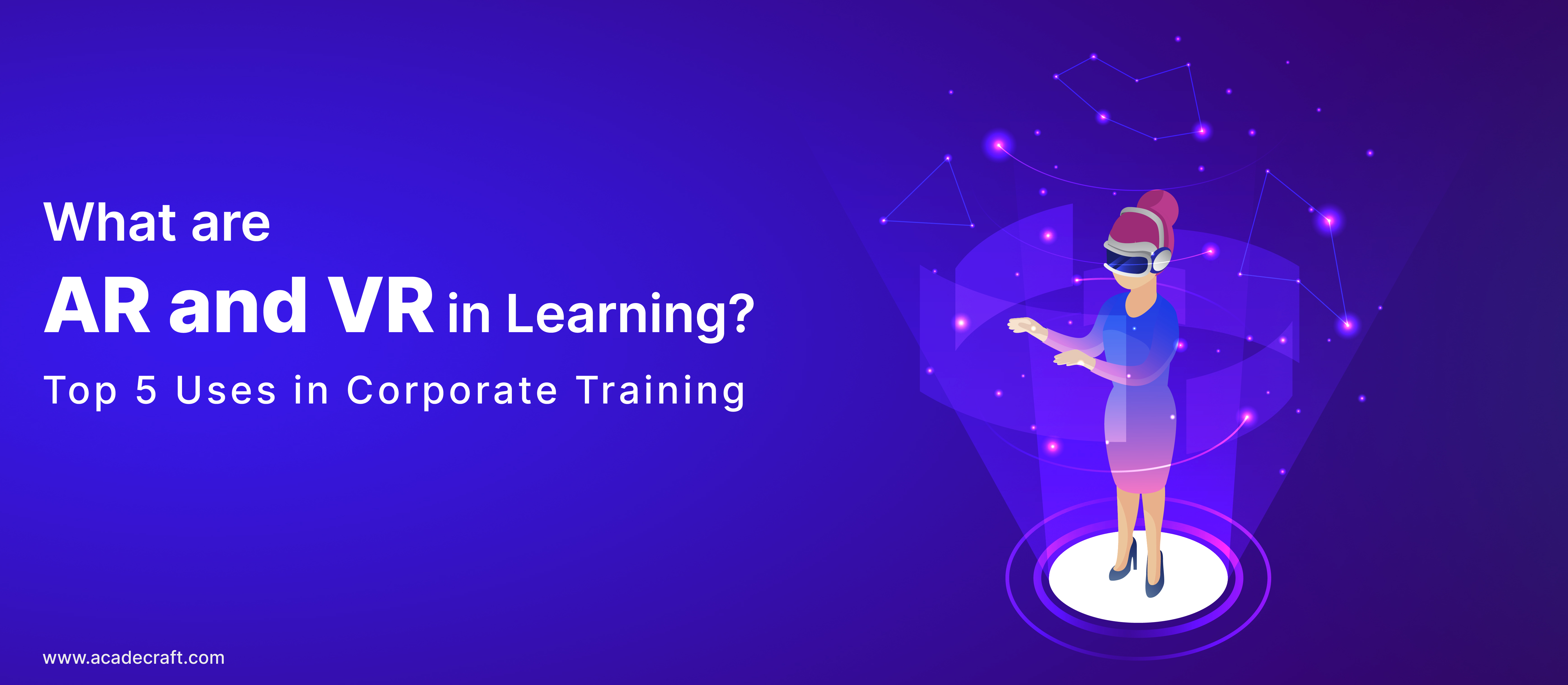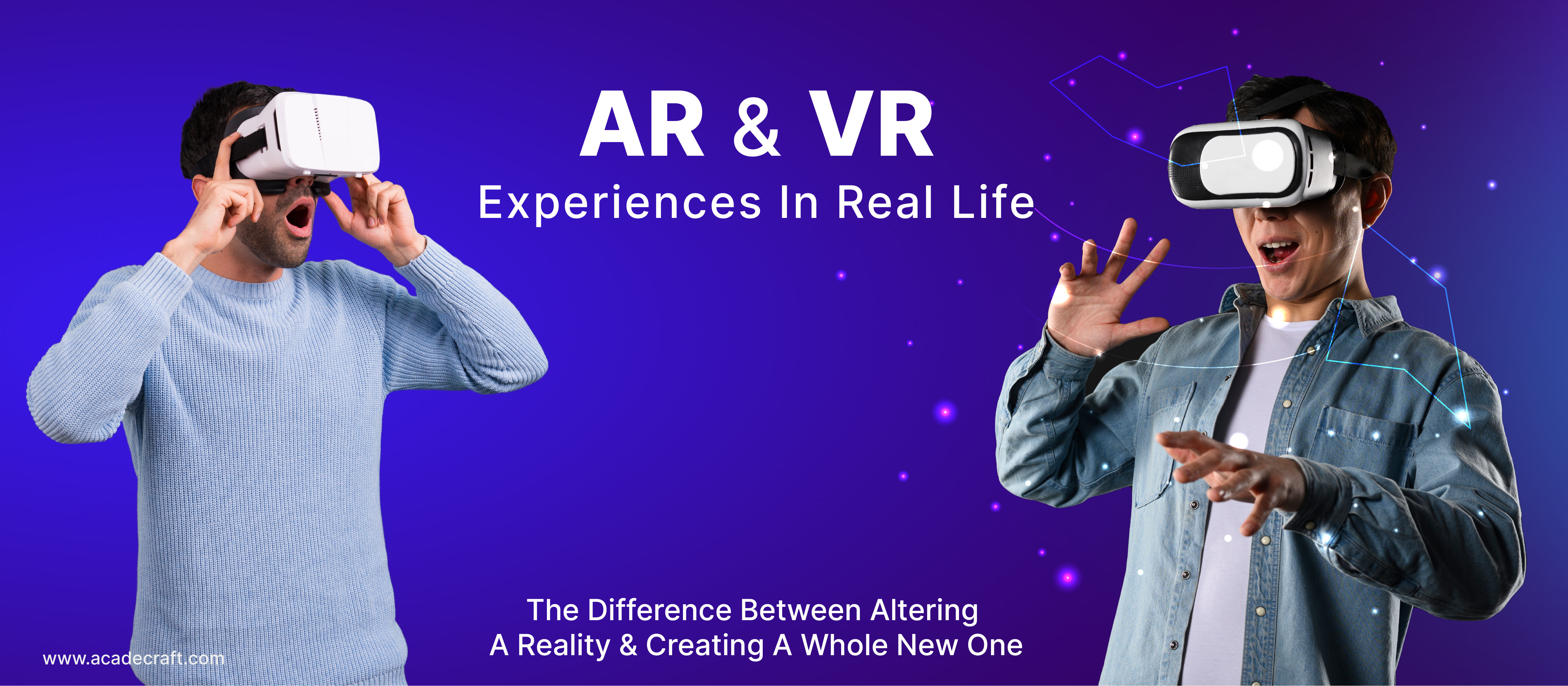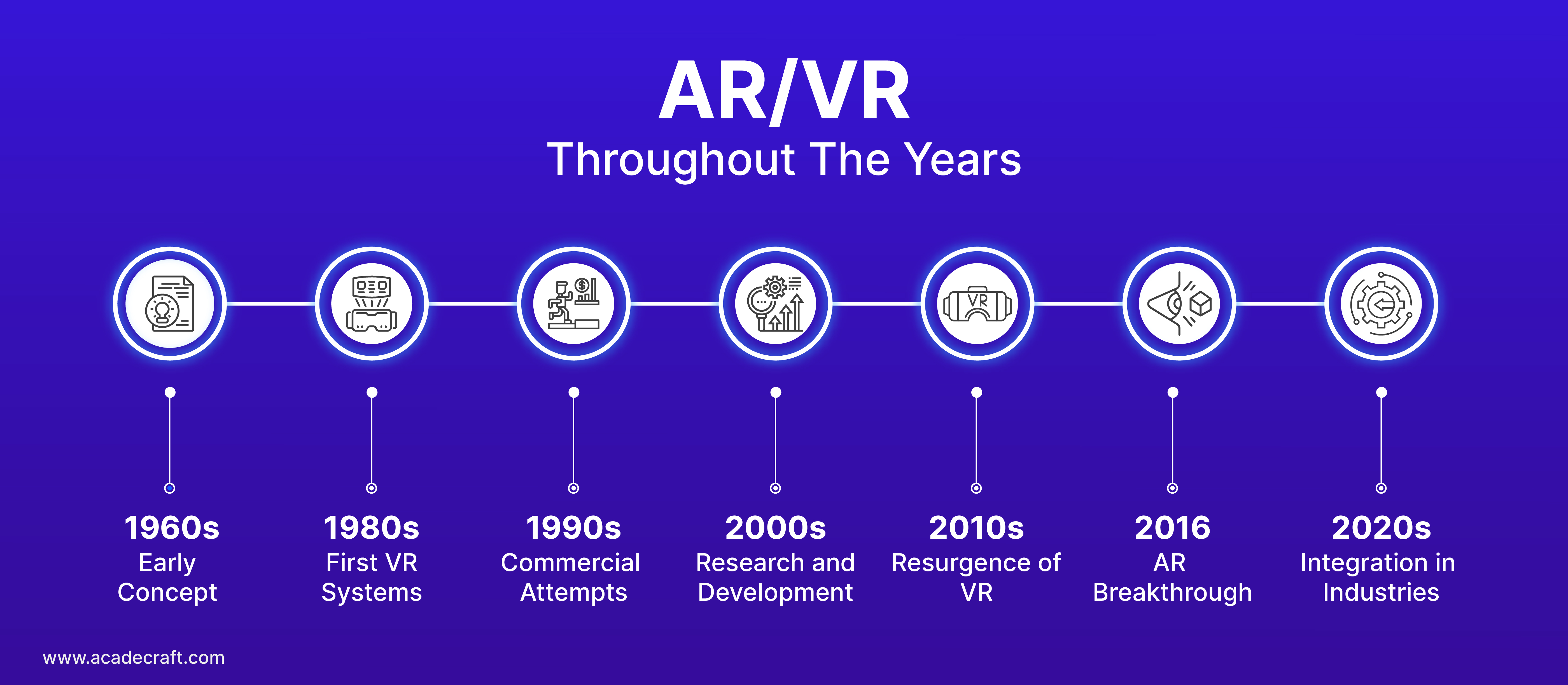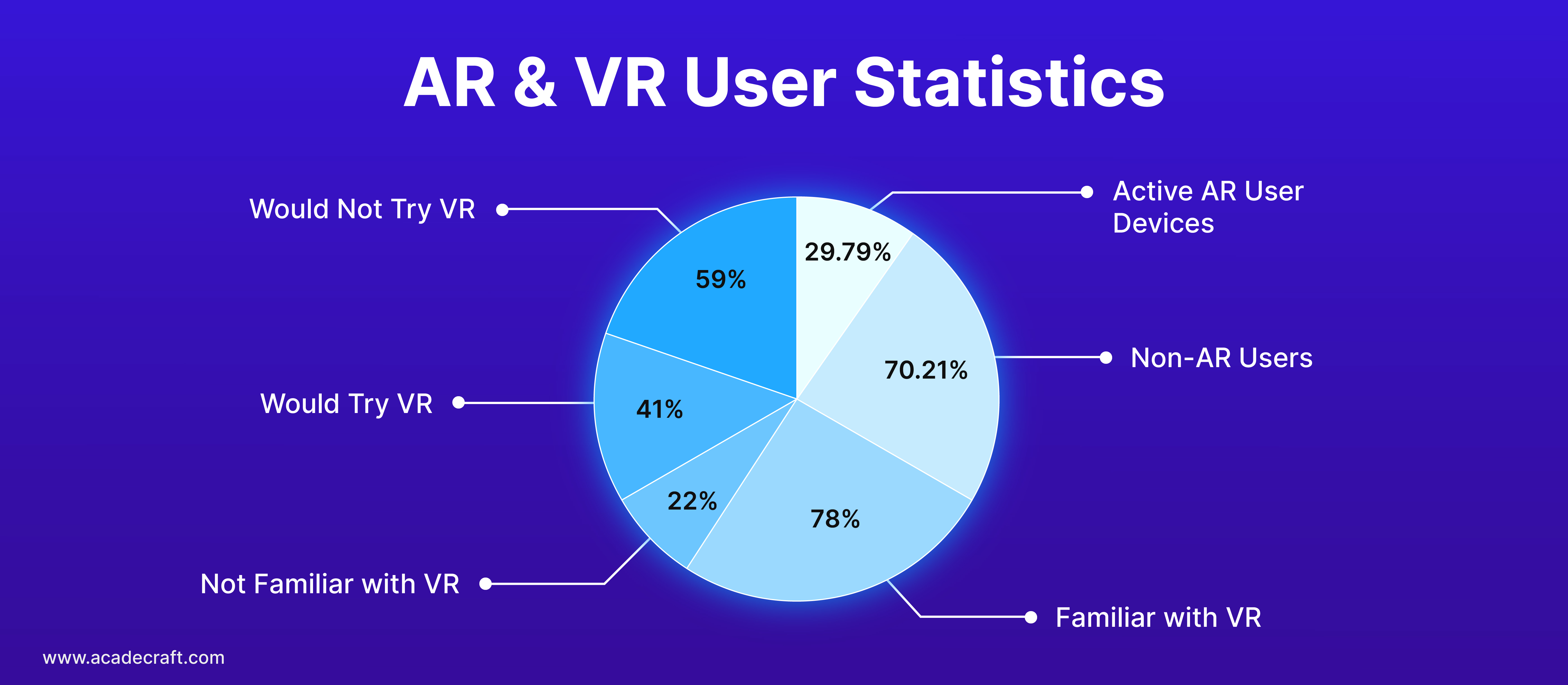
New technologies sway people into a progressive yet interesting digital world. You don’t need a lot of experience with such tech to use them; they are just meant to provide you with something that you may have never experienced before. One such concept is AR VR in learning.
As we are becoming more and more digitized by the minute, so is learning and training. Most of all, after 2020’s worldwide pandemic, digitization has proved to be advantageous. There is so much more to these simulated, virtual environments that people may not know about.
We have discussed not only what these two technologies are but also the 5 top uses in corporate training and learning. If you want to know more, stick around because we will change your perspective in mere minutes.

Augmented Reality, or AR, is a digital technology that helps people layer digitized content on top of the user’s real-world view. This helps people understand their surroundings and complex subject matters better. To enhance the sensory experience of the learner/user, AR can also include elements like images, sounds, and other sensory enhancements.
The tech is supported on many of the modern devices available in most people’s homes. You can try out this experience on devices such as smartphones, tablets, or AR glasses. The best part about AR is the fact that it enhances the actual experience of viewing through digital elements rather than creating a separate virtual environment.
This makes it extremely interactive and informative, even for people with certain challenges. It is mostly used for guiding a user’s natural navigational abilities mixed with endless combinations and features. AR-compatible devices may use cameras, sensors, and advanced algorithms to identify the different objects and surfaces to overlay the information properly in virtual and physical realities.
Virtual Reality, or VR, is another digital technology form that helps people experience custom virtual environments for learning and training. This tech is mostly used in the corporate world, as it has a wide variety of uses for people. This virtual environment is three-dimensional and uses computer-generated elements for interaction.
VR tech is known for its hyper realistic yet interesting virtual environments that immerse a user completely. It is possible because of special headsets and controllers that mimic the feel of real environments. Users can then find themselves in any virtual situation that might be relevant to their learning or training courses.
The VR device is also programmed to track head and hand movements to make sure that no user feels detached from their virtual world. You can interact with objects or indulge in an activity by triggering the necessary motions in real life. Some advanced VR tools can simulate extreme situations in order to train the employee even for the worst situations.
As per the above table, you can see that AR and VR have distinct use cases. It’s not mandatory that both technologies work best for you according to your use cases. This is why you should always weigh what works for you better.
The level of immersion is vastly different across both, and we encourage you to try both to get a feel for what technology closely suits your training or learning needs. There is no hard and fast rule that you can only use one, as mixed reality or MR technology is also on the rise.
The amount of control is also important for a user to understand, as some people may not be comfortable with interacting with a fully digitized space due to psychological reasons.
But, the question still stands, which one is superior? There is no real answer to this. Most users may prefer VR, with 98 million users worldwide, and AR currently has 23 million users worldwide. Even with better accessibility, why is AR lacking behind?
While most may think that AR is better, the thrill, fun and immersive experience of VR makes it highly attractive. But, at the end of the day, if the technology cannot seamlessly integrate with your work requirements, it isn’t for you.

Your company may be huge or small, comprising of just a few people. These technologies are created to boost the morale of newcomers or existing employees to make them feel worthwhile and upskilled at the same time. Here are some strategies you can use as a scaling business:
VR can enhance the boring onboarding process for on-site or remote employees to a motivating one. Often, onboarding is not a process that people cherish because of the bulky yet important information that stands at the core of everything. This can be changed by applying VR in necessary use cases.
People can be educated about company policies, how to maintain decorum in the workplace environment, and even given team introductions in a virtual environment. This learning-by-doing method is more effective than theoretical lectures, as they help in habit-forming behaviors, indirectly.
AR is not that useless either; it just needs the right use cases. Take, for example, skill development guides. These are especially important if you deal with certain machinery that needs an in-depth introduction. The digital inlaid information makes this more fun and interesting for people to grasp the knowledge.
Especially if you are a big organization that caters to multi-level employees with a high variety of skills, this technology can help you set some standard procedures for everyone to follow. You can create repair instruction manuals, troubleshooting tips, or live performance data sets. This also reduces the need for paper-based material for training, helping with your carbon footprint as well!
During the pandemic, this has been the safest yet most effective mode of communication among many people. This has given birth to the idea of virtual team collaborations offered by a reputed virtual reality service provider, like Acadecraft, that allow employees from any location to adapt and respond to the virtual team's needs quickly. Also, it reduces the time taken for discussions, which can lag in real life due to availability.
These virtual spaces can be used for meetings, project discussions, or team-building exercises, enhancing cohesion and reducing travel costs. They can also help you implement various interactive activities and sessions, which can encourage team-building from within.
If you modify the AR technology according to your requirements, you can make it give you real time performance data and feedback. AR has now developed a cloud-based system in order to let multiple users get the same experience from multiple devices. This allows everyone to view the actual experience of the other person to provide genuine feedback.
Even if you are an inexperienced user, AR doesn’t have such a big learning curb. Hence, any demographic or cultural person can access AR tech to demonstrate their task’s accuracy. You will just need a modern device and a stable internet connection.
Most industries have a set of regulations that they follow in order to create a base standard for other people to follow. While not every tech can support you, VR is the perfect vehicle for this task. The reason is VR’s ability to project a virtual space with motion-based movements.
You can easily instill good practices while allowing users to make genuine mistakes from which they can learn. As per your requirements, you can teach real-life ethics dilemmas or safety hazards, allowing employees to make decisions in a risk-free virtual environment. This experience will help them weigh out the loss or gain in real-life situations.
We can assess the future of corporate learning right now. As we are slowly moving towards the automation of processes and virtualizing whole spaces, it will allow more people to be isolated from the physical world as well. A balance of both is extremely necessary as not evolving with the technology can also cost you your job. Here are other predictions for corporate training and learning:

Corporate training has needed attention for years, especially in terms of automating repetitive processes and creating new, engaging experiences. The attention span of a learner is a maximum of 20 minutes (Reference - https://blog.gutenberg-technology.com/en/course-duration-and-its-impact-on-learner-attention-span) and a minimum of just 8 seconds. This is a challenge that companies have to surpass in order to create efficient yet accurate workers who are ready for any situation.
The new innovations and evolutions in technologies of AR and VR development companies are beginning to realize the market potential and the huge gaps in making a cohesive experience for everyone. These motivations can allow many users to fully immerse themselves not only in their work but also in the bigger growth of the organization.
Share